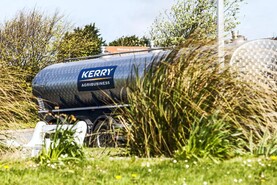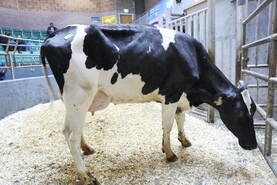Since the lifting of EU milk quotas in 2015, Irish milk production has increased from an average of 4.8-5bn litres in the last years of quota to 7.3bn litres in 2017. It is forecast to reach a record 7.5bn litres in 2018.
More importantly, not only has the volume of milk production increased by almost 50%, the unit value of milk production has increased from an average of 42-45 c/l across the Irish milk pool in the last years of milk quota to just over 56c in 2017, according to the CSO (see Table 1).
This real increase in value, combined with volume growth, has meant that the total value of Irish dairy production (ex-farm) has increased from just over €2bn in the latter quota years to €4.4bn in 2017, according to the CSO.
This represents an additional €2.4bn available in the Irish economy, double the value of that between the years 2009 and 2013. Interestingly, over this same period, the value of dairy exports has increased from an average of €2bn to €4.1bn in 2017.
However, perhaps even more importantly than the export figure, the economic impact of the dairy sector as measured by its expenditure in the Irish economy has increased by over €2bn. The dairy sector now spends €3.8bn annually in the Irish economy.
This increased expenditure in the Irish economy has ranged from increased farm inputs and services through investment in new processing facilities and in support of an additional 10,000 jobs across the economy from dairy farming right through to manufacturing distribution and research.
The magnitude of this increased Irish economy spend in terms of the impact across the whole of the Irish economy is best illustrated by the Department of Jobs and Innovation’s annual survey of expenditure.
It shows that the expenditure of all domestic and multinational industry in the Irish economy was €42.9bn in 2016.
Therefore, the dairy industry now accounts for almost 10% of total expenditure by all industries in the Irish economy. Indeed, the dramatic impact of dairy expansion across the Irish economy is best indicated by the fact that the dairy industry is now spending €3.8bn in the Irish economy, while the whole of the multinational sector, across pharmaceuticals through to software and IT, is spending €20bn annually.
Volatility
The transition from a milk quota, plus EU market supports based regime, to a more open and volatile world market driven scenario has presented huge challenges in terms of dealing with price and income volatility.
It is a testament to the resilience of farmers and the innovation of Irish milk processors that both the volume growth trajectory and the increase in unit value were sustained throughout the ups and downs of the global milk price cycles.
While some element of the increase in the unit value of dairy output has come from an increase in the price of butter since the middle of 2016, the bigger factor driving the growth in value added would seem to be the move to higher income returns from the infant formula and sports nutrition sectors.
In essence, this increase in milk production, Irish economy impacts, jobs and value-added derives from investments on-farm, processing capacity and research and innovation.
Figures from Enterprise Ireland showed that in the two years pre-quota abolition, Irish dairy processors invested in 36 projects, spending €770m, with a State grant support of €79m.
The clear takeaways from the analysis above is that the initial impacts of dairy expansion have been hugely significant in terms of return on investment (including state support) and even more importantly, the huge economy-wide impact of dairy expansion across the Irish economy.
A very clear and present danger to this continuing increase in Irish economy impact is Brexit. Based on analysis by the industry, a hard Brexit could reduce the return from the Irish cheese sector by as much as 2c/l across total milk output.
A coordinated response to Brexit, which focuses on a combination of increased investment supports and meaningful market supports such as private storage aid for cheddar cheese as we transit through the impacts, is required if the dairy sector is to continue to drive Irish economy growth.
What is the real Irish economy?
Profit transfers from multinational companies heavily distort official Irish economy figures such as Gross Domestic Product (GDP) and Gross National Product (GNP). These transfers have amounted to approximately €90bn annually.
They have the effect of moving Ireland’s economy from number two in the EU under the GDP measure to number nine in terms of actual income consumers, according to Eurostat.
Because of the GDP distortion, it is important to understand the difference between figures which show a growth in multinational business turnover and the real impact of this growth on the Irish economy.
The best measure of the real Irish economy impact is Irish economy expenditure.
This figure provides a measure across all industries of how much companies and business sectors actually spend on raw materials, people/salaries and services in Ireland.






 This is a subscriber-only article
This is a subscriber-only article









SHARING OPTIONS: